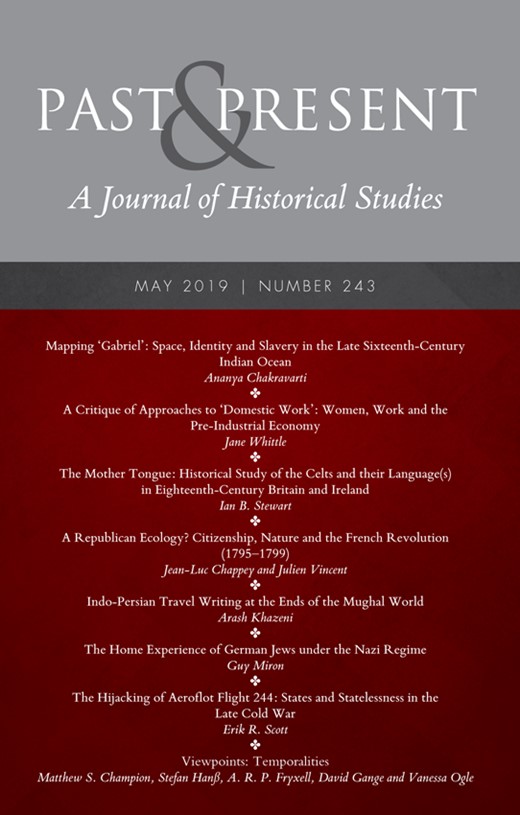-
Views
-
Cite
Cite
Matthew S Champion, The History of Temporalities: An Introduction, Past & Present, Volume 243, Issue 1, May 2019, Pages 247–254, https://doi.org/10.1093/pastj/gtz007
Close - Share Icon Share
Extract
In recent years, and across multiple disciplines, temporality has become a focus of scholarly attention. Why is this the case? Haven’t historians always been concerned with temporalities? As the essays gathered here suggest, the answer to this question has to be ‘yes and no’. Like all categories of analysis, time has provoked scholars to think in different directions across multiple disciplines for many years. But with increasing unanimity scholars are now emphasizing histories of ‘temporality’ and not simply of ‘time’. What does this shift imply?
Thinking with ‘temporalities’ has helped historians to understand that ‘time’ cannot be considered as an object separate from human configurations, perceptions and measurements, as well as to emphasize that ‘time’ is always and everywhere a condition of life in the world, and therefore an essential category of historical analysis. Temporalities are to time what materialities are to matter: a blurring of what might seem determined, an entangling of time with action, a refusal of subject–object divisions. This language of blurring and entanglement (or, as some might put it, ‘fuzziness’) is a way of allowing our objects of study to remain complex, often irresolvable, generating new temporalities as they pass from moment to moment in the passage of time.1 And these temporalities are always bound up, too, with the scholar’s own temporal settings. The history of temporalities is, in this mode, a self-reflexive history that must be alert to the temporal forms of historical analysis and representation, and to temporal assumptions and habits that shape fields and objects of knowledge.




